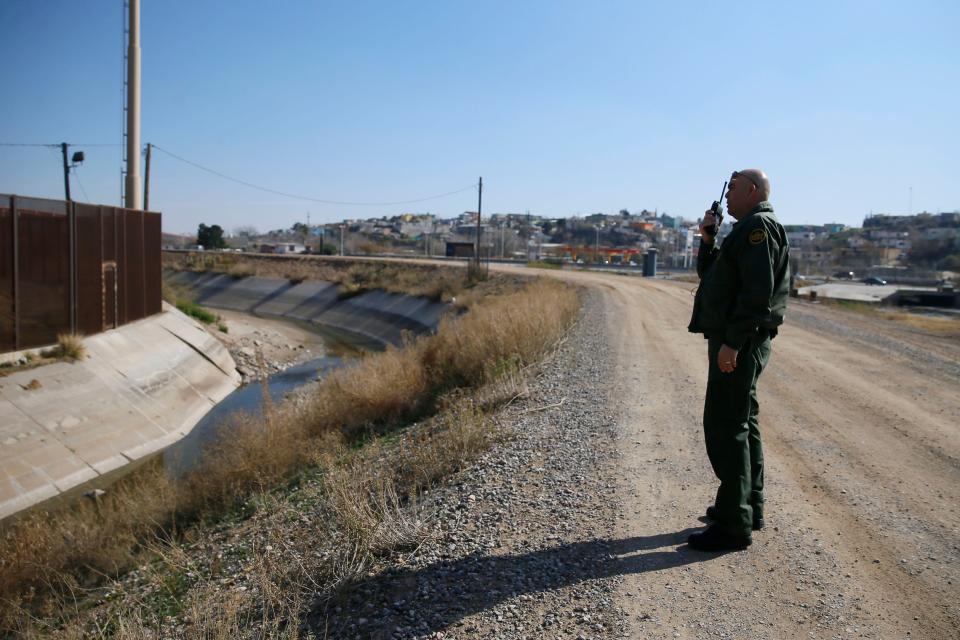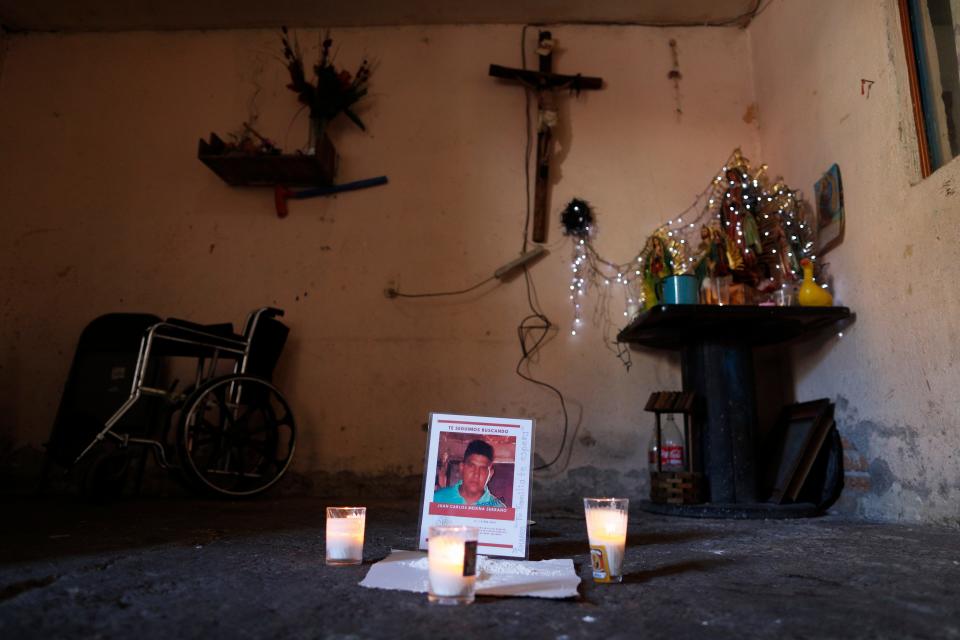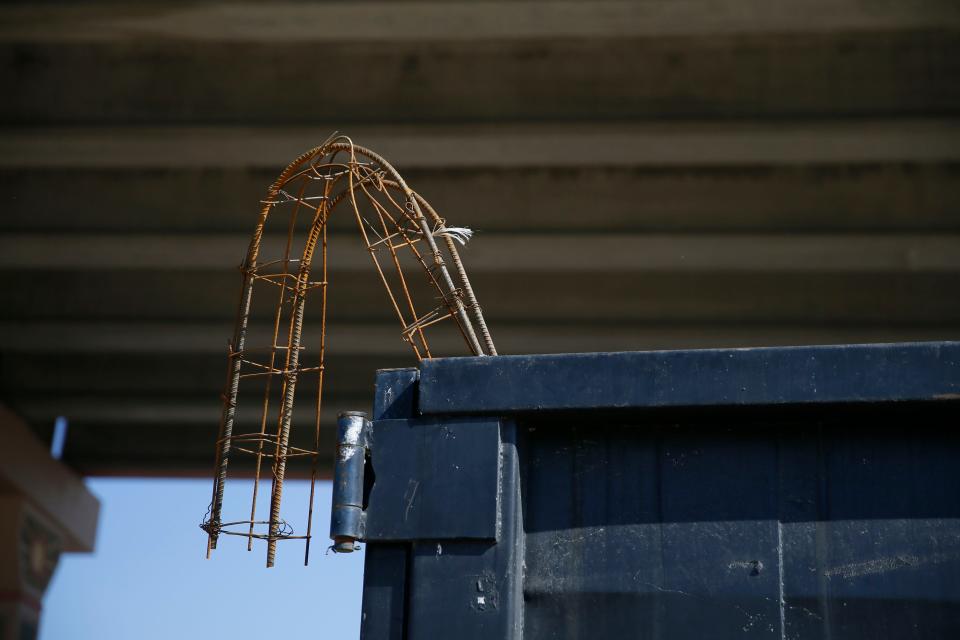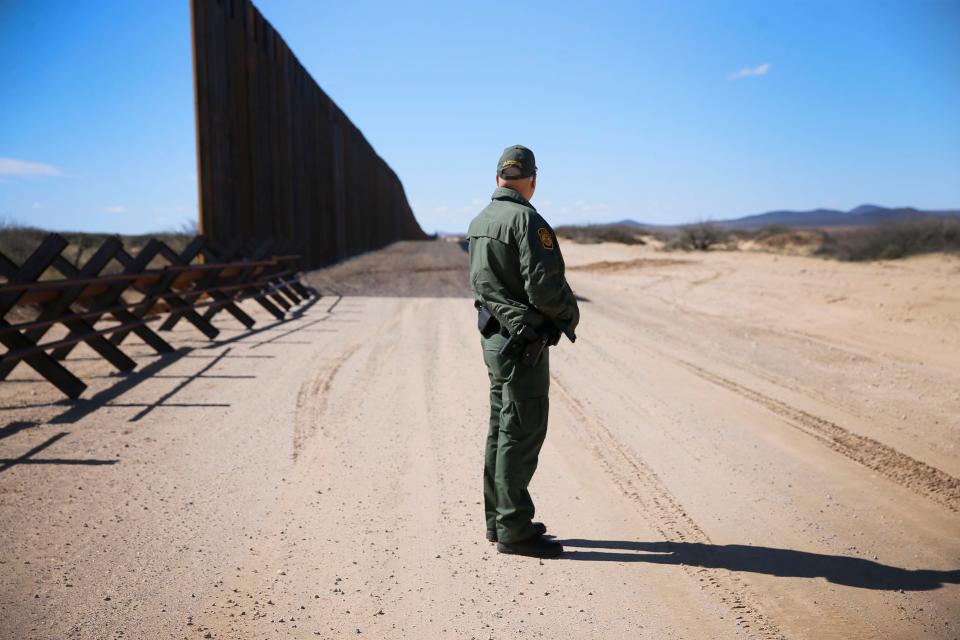After Trump targeted Central American migrants, violence and fear drive more Mexicans to USA
JUÁREZ, Mexico – Valeria was working at her small store in southern Michoacan state when a young man from the neighborhood approached to buy a cigarette.
Seconds later, a truck full of armed men stopped in front of the shop. They grabbed the young man and left. Valeria ran to the man’s wife to tell her. He was found dead that day.
Valeria, who asked that her real name not be used to protect her identity, said police warned her, “People say you saw.” The next day, a family member received a message: Valeria “would be next.”
Before the week was over, Valeria’s family was packed and gone, headed for the border. Like thousands of Mexicans, the family fled a combustive mix of crime and poverty in hopes of making it to the USA.
In the past four months, Mexicans have once again become the majority of unauthorized migrants caught at the border, according to U.S. Customs and Border Protection. Border Patrol apprehensions of Mexican nationals have risen for two consecutive years, jumping 30% from a 40-year low, reversing a decade-long downward trend.
Although the United States has pressured Mexico to crack down on Central American migrants, analysts said the Mexican government hasn't created economic and security conditions that might keep its own people from leaving. The country struggles with its highest-ever level of homicides and a stagnant GDP, while a booming U.S. economy creates a powerful draw north.
“We should be concerned that the Mexican economy is not growing and, in certain states, is in recession. And violence is once again on the rise and hitting record levels,” said Christopher Wilson, deputy director of the Mexico Institute at the Wilson Center think tank in Washington.
Border apprehensions of Mexicans outpace other nationalities
Eight years ago, the Pew Research Center concluded that after three decades of mass migration north, more Mexicans were leaving the USA than coming. Before that, in the decade before the Great Recession, U.S. border agents detained almost a million Mexicans each year.
Analysts called the 2012 phenomenon “net zero migration” and attributed the steep decline to increased deportations from the USA combined with a long-term demographic trend toward smaller families in Mexico, an improving economy and the country’s efforts to fight organized crime.
Mexico’s economic and security gains proved fragile. Entire extended families are once again leaving their hometowns, from Michoacan, as well as from Guerrero and Zacatecas states, all plagued by violence and anemic economic growth.
The number of Mexicans apprehended with a family member at the border in the first four months of fiscal 2020 – 4,425 – is on pace to be more than double the 6,004 Mexicans traveling as a family unit apprehended in all of fiscal 2019, according to CBP.
Overall, border agents apprehended 63,405 Mexican nationals in the four-month period, 87% of them single adults, compared with 47,000 Central Americans detained over the same period. In contrast, border agents detained 144,836 Central Americans and 44,832 Mexicans during the first four months of fiscal 2019. Border agents detained 607,000 Central Americans and 166,000 Mexicans in 2019.

Mark Morgan, acting commissioner for CBP, said in a news conference that “since we’ve all but addressed the crisis from the Northern Triangle countries” of Guatemala, Honduras and El Salvador, smuggling networks are “looking to other vulnerable groups,” such as Mexicans.
Should trends continue, the number of Mexican apprehensions could reach the highest point since 2016, before Donald Trump won the presidency.
Mexican migrants aren’t subject to the Migrant Protection Protocols, under which Central American and other asylum seekers may be returned to Mexico. The MPP program was briefly halted by the 9th U.S. Circuit Court of Appeals on Friday before being reinstated.
The U.S. government has made preemptive efforts to deter Mexican migration. CBP launched a program in late October to fast-track Mexican asylum claims, called the Humanitarian Asylum Review Process, or HARP. The program returns asylum seekers quickly if their claims are found to have no merit. Hundreds of Mexicans, including Valeria and six other members of her family, have been returned or deported to Mexico under the program.
The American Civil Liberties Union sued the government in December, alleging the program violates due process for migrants. Thursday, Morgan told a House subcommittee that slightly more than 1,200 people have been enrolled in HARP.
Mexico confronts record number of murders, rampant violence

Before 2006, homicides in Mexico hovered below 15,000 nationwide, peaking at 14,619 in 1999. When Felipe Calderon took office as president in 2006, he deployed the military to fight the cartels, which sent homicide rates soaring once again. By the time he left office six years later, murders had climbed to 21,459 in 2012.
Government statistics show the number of homicides dipped again in 2014, but murders have climbed ever since.
Last year, Mexico reached its highest level of homicides in modern times: 34,582 dead in 2019, an increase from the previous record of 33,341 in 2018. Driving the violence are criminal organizations, previously controlled by half a dozen kingpins, that splintered and multiplied, fighting turf battles that wreak havoc on communities across Mexico.
In the past, eruptions of violence “were shorter in duration. What we are seeing now is that the battles are raging on, and there is no end in sight,” said Scott Stewart, a Mexico security analyst with intelligence firm Stratfor based in Austin, Texas.
After taking office in Mexico in 2018, Mexican President Andrés Manuel López Obrador laid out long- and short-term plans to tackle the problems with violence.
Long-term, he said he would tackle the “root causes” of the violence, including a lack of opportunities for young people. Short-term, he would create a 70,000-strong national guard focused on combating violence.
After Trump demanded that Mexico curb Central American migration, López Obrador commanded his generals to deploy more than 21,000 troops of the newly created force to Mexico’s southern and northern borders to stop the flow of foreign migrants.
U.S. pressure to stem migration through Mexico led the country to shift resources from fighting the violence driving its own people north.
‘They began sending notes’: Mexico extortion threats intensify

Ever Navarrete Gonzalez, 24, drove a taxi in Costa Chica, Guerrero, a major hot spot for violence in Mexico, in a state where the economy shrunk 1% in the third quarter year after year. Navarrete Gonzalez fled north with his wife, Monica Robledo Ramirez, 23, in January after several taxi drivers died for refusing to pay cartels an extortion fee.
“When we left, we decided to go because three days earlier, they had killed a (taxi driver),” Robledo Ramirez said. “They began sending notes. And in those notes, my husband’s name appeared.”
The couple took a flight north and ended up in Nogales, Mexico, just south of the Arizona border, where other relatives had crossed.
For three months, the couple waited to present their claims, staying at a migrant shelter with dozens of other Mexican asylum seekers.
“I explained to them that because you’re married, you don’t have children or anything like this, you’re going to detention,” said the Rev. Rodger Babnew, who runs the migrant shelter for the nonprofit Cruzando Fronteras in Nogales. “And they said, ‘We want to try.’ ”
U.S. authorities detained Navarrete Gonzalez but deported Robledo Ramirez to Nogales, Sonora, determining that she didn’t qualify for asylum. They gave her a 10-year ban on entering the USA. The future of her husband, locked up in detention 100 miles away, is uncertain.
“We left (Guerrero) because we were afraid,” Robledo Ramirez said, “so I don’t plan on going back.”
They’re far from the only ones in such situations along the border.
León Fernando Ruiz Beltran, 18, stayed at the same shelter as Robledo Ramirez, along with his parents and two younger siblings.
They left Michoacan in December for Nogales when the extortion from cartel gunmen forced his dad to shut his store. The family said they faced serious threats from his younger brother’s school principal, whom they accused of bribing authorities and not addressing an incident in which classmates cut off the tip of the boy’s finger.
“We came thinking that in a day or two, we’d be able to get across. … But when we got here, we learned it wasn’t like that,” Ruiz Beltran said.
A priest who runs the Anglican shelter in Juarez where Valeria and her family stay said he sees a pattern among the Mexicans arriving.
“There are three clear tendencies” for why they migrate, the Rev. Hector Trejo said. “Among the Mexicans, violence is the top reason. The second is economic necessity. And the third is the lack of employment opportunities. Often it’s a combination of the three, but one reason always prevails.”
Economic factors in Mexico and USA push, pull people north
U.S. officials are aware of the economic challenges in Mexico and their potential to push people north. Morgan, the acting CBP commissioner, said criminal networks cash in on that economic vulnerability.
“They’re exploiting the challenges with the economy right now,” he said, “to really drive and convince and trick a lot of these individuals.”
Mexico’s equivalent of the Census Bureau, INEGI, said the Mexican economy shrunk by 0.1% in 2019 – the first contraction in a decade. Most projections have the country’s economy growing at an anemic 1% to 2% this year.
By contrast, the U.S. economy has seen uninterrupted growth for nearly a decade, and unemployment is at a low 3.6%.
López Obrador’s administration instituted socioeconomic programs designed to help Mexico’s poor, such as monthly cash transfers to low-income students, the elderly or people with disabilities.

Navarrete and Robledo Ramirez were headed for South Carolina before he was detained and she was deported.
U.S. asylum officers make their determinations independent of each other, yielding mixed results from a single claim. Though Valeria and six other family members were deported despite the threats she faced, asylum officers released four of her family members, including two grandchildren, into the USA. They headed for Ohio, where relatives took them in.
‘A lot of evading activity’: Migrants take increased risks to cross border
Mexican migrants take greater risks to illegally enter the USA, turning to smuggling tactics that place their lives in danger.
Inside a Border Patrol station in El Paso, Texas, agents fixated on a black-and-white video image from early one February morning: men, eight of them, running through the Rio Grande’s concrete bed, knee-deep in water, up to the 18-foot border fence and over it, using a rope ladder.
The Border Patrol labels every crossing with a number. This was “Event 231.” All eight men – from Mexico, Guatemala and Brazil – were apprehended. Hours later, a scrap of yellow rope was still hanging from the rust-colored steel fence.
“We’re starting to see a lot of evading activity,” said Border Patrol Agent Ramiro Cordero, a spokesman for the agency’s El Paso sector. “We’re starting to see the criminal organizations working hand to hand on either side to avoid detection.”
A 62-year-old Mexican man died after a smuggler’s boat capsized off the California coast last month. In January, CBP in Texas found 36 migrants trapped in a dump truck with a false bed, under gravel and dirt, banging to get out. Agents found two Mexican nationals stuffed in a car trunk in rural Arizona in November.
Stuck at the border, with no way home

U.S. border officials expect apprehensions at the U.S.-Mexican border to go up as the weather gets warmer.
Valeria sat on a bench in the migrant shelter, wiping tears from her face, trying not to smudge thick cradles of eyeliner under her eyes.
In Michoacán, she said, she and her three grown children and their families lived on the same land, in homes that opened on a common patio – without riches but with her grandchildren close. The danger she faced upended that life, she said.
“I’m never going to get over it,” she said. “I never imagined this. I thought I would always be with my grandchildren.”
She and her husband will stay in Juarez, she said, and find a way to survive while they figure out what to do. They can’t go back to Michoacan, she said.
Trejo, who has hosted Valeria and her family for weeks, said Juarez shelters are prepared whether the Mexican migration intensifies or shifts again.
“Ultimately,” he said, “people who have been displaced are looking for solutions, and they can be very creative.”
This article originally appeared on USA TODAY: More Mexican immigrants try to cross into USA

